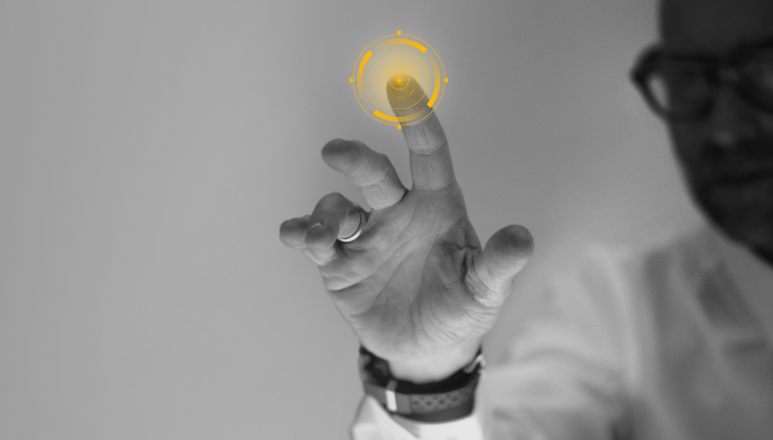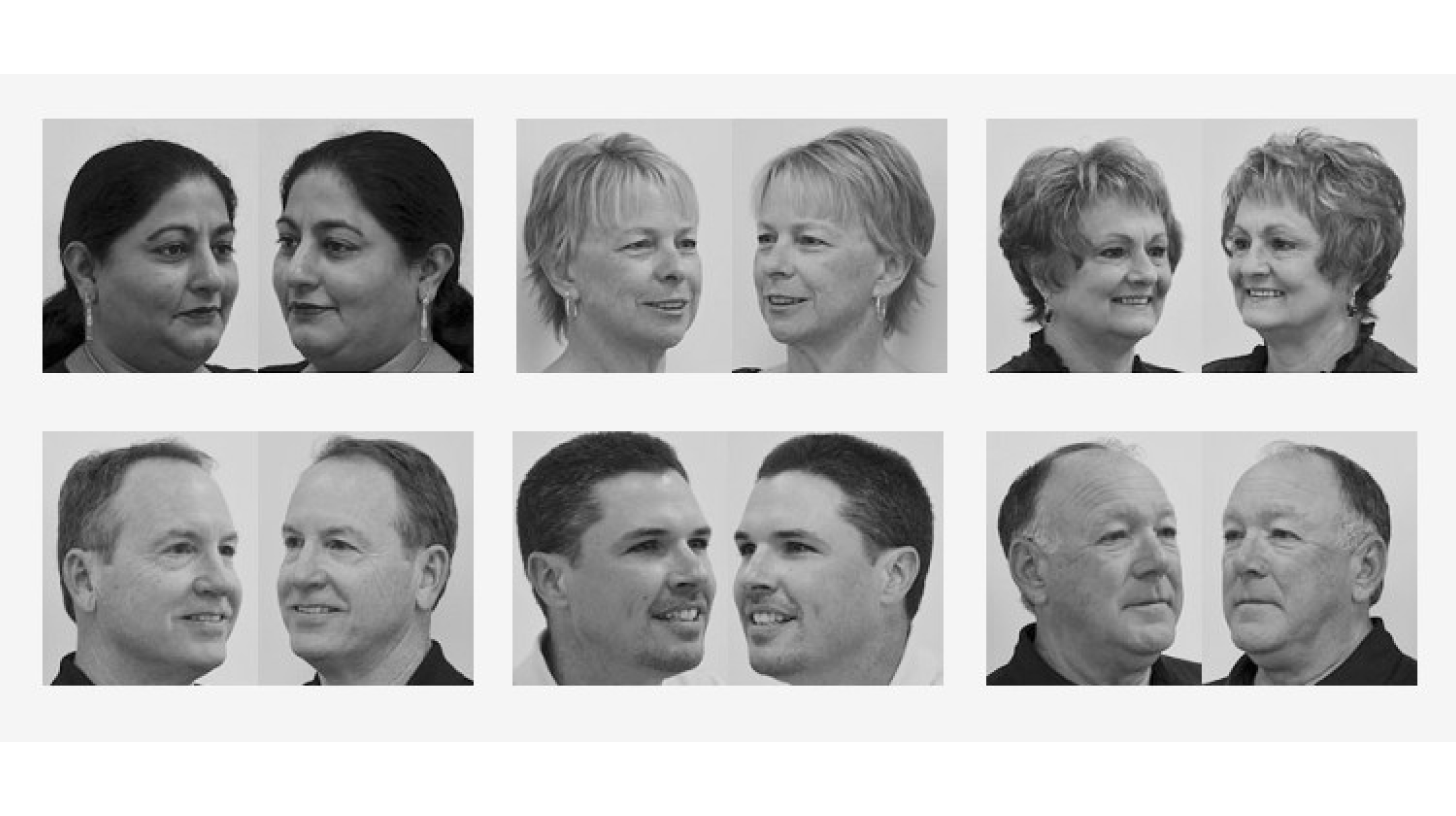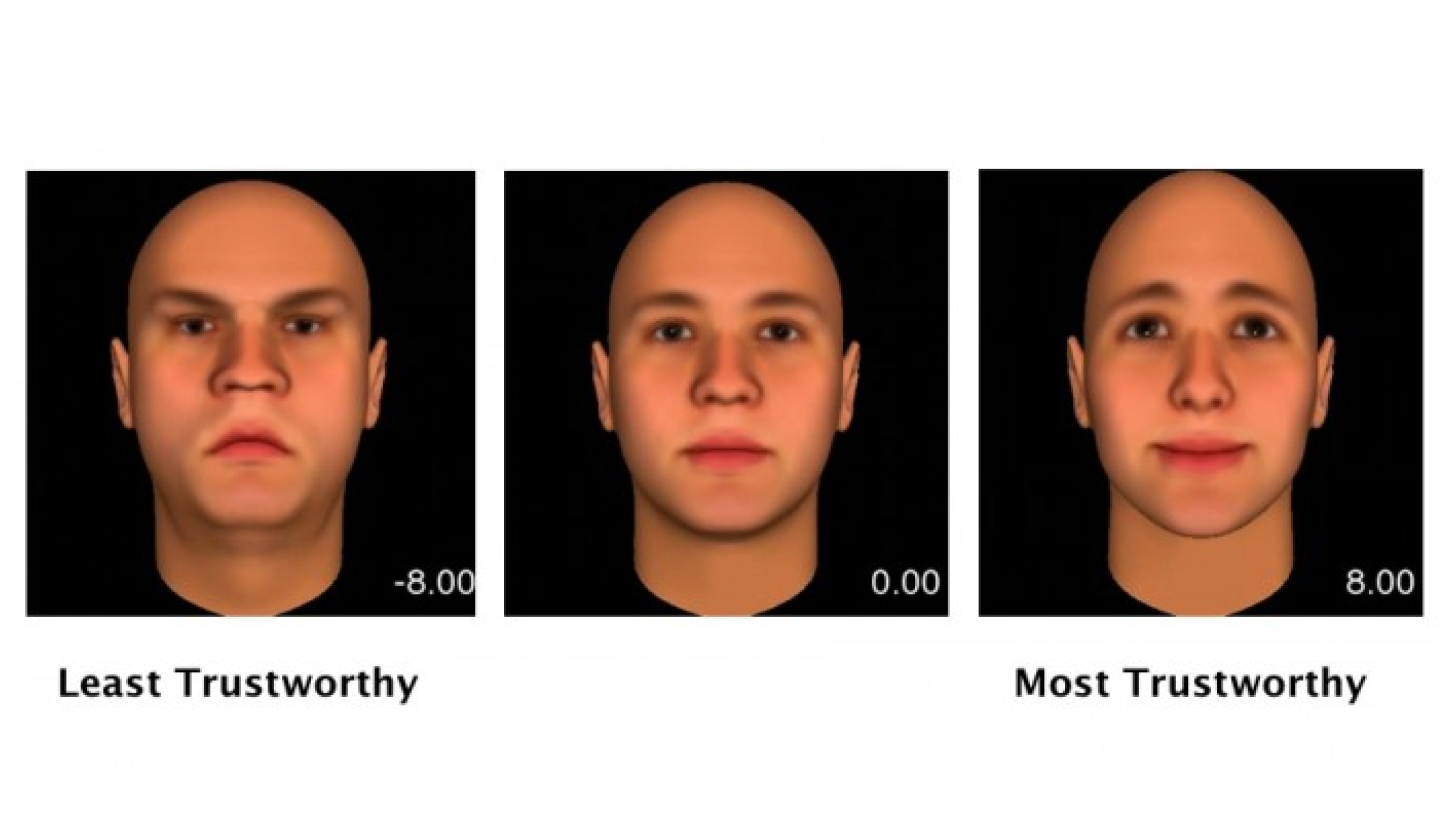These indicators can take various forms, including elements in LinkedIn photos, word choices in online communication, and behaviors observed during video calls, such as camera usage and attentiveness.
Explore our comprehensive digital body language training here!
Enhancing Your Digital Body Language
Discover some straightforward ways to give your digital body language a makeover.
Tips for Your Profile
Based on a survey 1 involving more than 200 human resource professionals, business owners, and managers, a candidate’s LinkedIn profile picture plays a crucial role in the hiring process. Surprisingly, 71% admitted to rejecting a candidate solely based on a subpar LinkedIn profile picture.
So, whether you’re polishing your LinkedIn profile or crafting an impressive bio, here are scientifically supported tips for you.
Enhance Competence, Likability, and Influence
PhotoFeeler, a unique platform, provides insights from over 60,000 individuals who have cast their votes on profile pictures. The findings shed light on competence, likability, and influence.
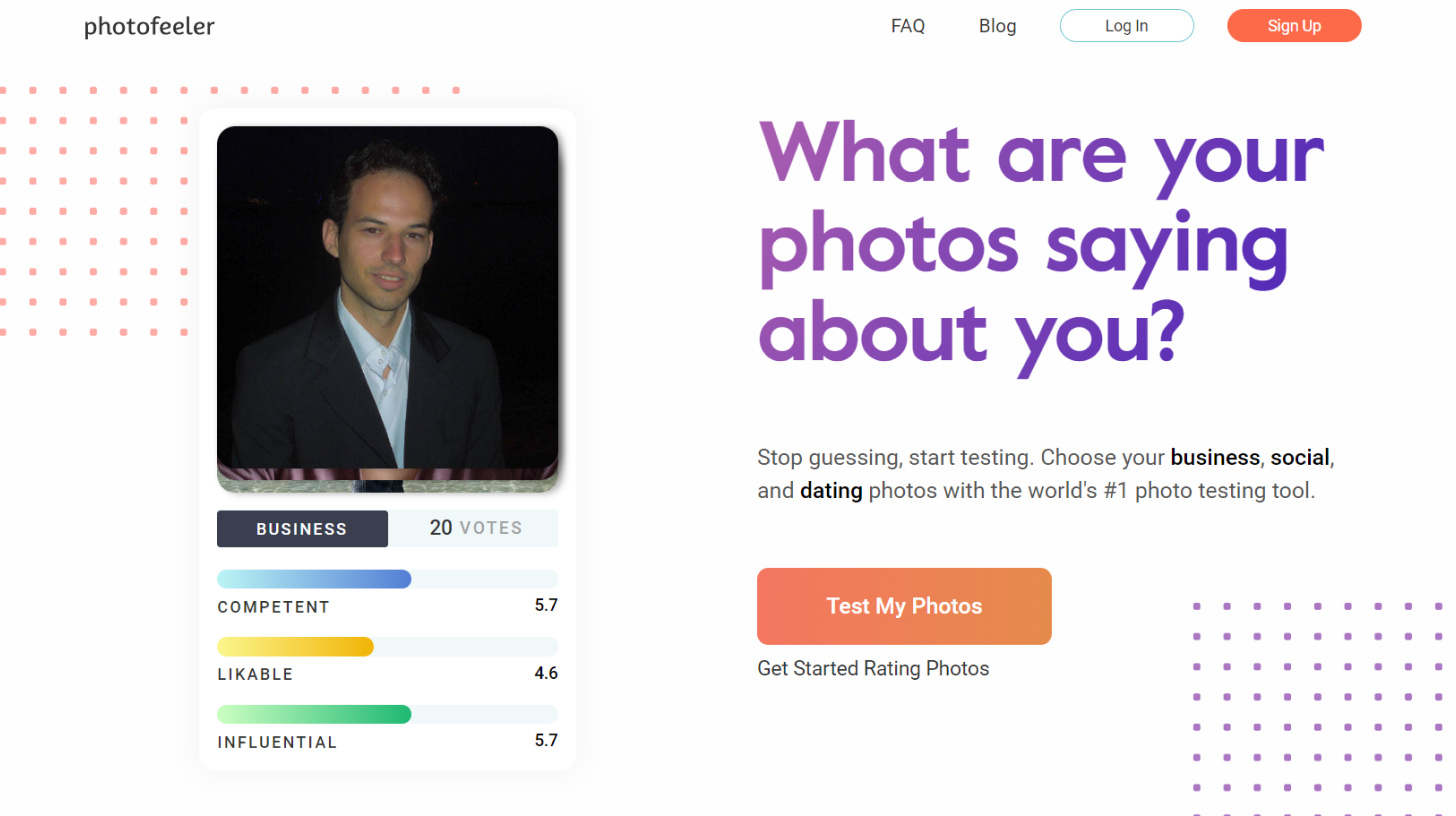
Here’s what the research reveals:
- Clear Eyes: While sunglasses may protect your eyes from the sun, they can diminish your likability. According to PhotoFeeler’s data, eye blockage, even from stylish shades, decreases the Likable score by an average of -0.36. Squinching, a slight squinting of the eyes, results in an average gain of +0.33 for Competence, +0.22 for Likability, and +0.37 for Influence. It radiates comfort and confidence.
- Defined Jawline: A shadow outlining your jaw contributes to a +0.24 increase for Competence, +0.18 for Likability, and +0.18 for Influence. It’s all about those sharp contours.
- The Impact of a Smile: Displaying your pearly whites earns you an average of +0.33 for Competence, a remarkable +1.35 for Likability, and +0.22 for Influence. An open-mouth smile takes it a step further, with a Likability boost of +1.49. However, remember that moderation is key; excessive laughter might lead to a reduction in Competence and Influence points.
- Dress Impressively: Your choice of attire matters. Formal dressing results in an average increase of +0.94 for Competence and +1.29 for Influence. Think dark-colored suits and button-downs with ties (for men) for the ultimate formal impact.
- The Perfect Composition: The composition of your photo is crucial. A head-and-shoulders or head-to-waist shot is ideal. Face-only close-ups bring Likability scores down by an average of -0.21, while full-body photos negatively impact both Competence and Influence by -0.29.
- Establishing the Atmosphere: Your surroundings have an influence. Dim photos resembling nighttime can reduce your Likable score by an average of -0.38. Conversely, excessive saturation is not beneficial either. Extremely high color saturation can diminish perceived Competence by -0.31, Likability by -0.07, and Influence by -0.35. However, black and white photos maintain a neutral position.
Get Feedback by Uploading Your Photo for Evaluation!
Opt for a Cozy Background Hue
Moz, an SEO company, undertook an intriguing experiment 2 to unveil the impact of background color on click-through rates.

The Outcome: Backgrounds with warm hues yielded the most favorable results. Consider welcoming shades such as reds, oranges, and yellows. These colors can elicit emotions ranging from enthusiasm to coziness and beyond.
Let Your Profile Picture Be Chosen by Others
When it comes to selecting the ideal profile picture, we often rely on our own judgment. However, research from two extensive online studies involving 610 participants 3 reveals an interesting fact—profile pictures chosen by others tend to create more favorable initial impressions than those we choose ourselves.
Here’s a straightforward approach: Gather a few photos you consider suitable for your profile and consult 2-3 friends or trusted acquaintances to get their opinions on the best one. More often than not, the chosen photo from this selection might make a more favorable impression than the one you would have picked!
Take Action: Alternatively, you can utilize a free tool like PhotoFeeler, allowing other users to vote on your picture.
Give Color Selection Due Consideration
When aiming for a distinctive profile, the choice of colors becomes crucial. A study 4 that analyzed over 200 Twitter profiles revealed that the color yellow is a popular preference among users.
Yellow, with its cheerful and attention-grabbing nature, emerged as the predominant color for 25.92% of the examined profiles. The breakdown is as follows:
- Yellow: 25.92%
- Black: 22.22%
- Blue: 14.81%
- White: 11.11%
- Green: 9.25%
- Purple: 7.40%
- Orange: 5.55%
- Red: 3.74%
Consider incorporating some yellow, especially as a background for your profile picture or in the banner image. At Science of People, we use yellow as one of our brand colors for a good reason!
If yellow isn’t your preferred color, make a deliberate choice in selecting the color that resonates with you. Colors have a tendency to convey different meanings and create distinct impressions. Check out our color psychology overview and video for more insights.
Apply the Rule of Thirds
Guy Kawasaki, a well-known author and speaker 5, provides valuable advice on profile photo composition: embrace asymmetry. In the realm of profile pictures, symmetry can occasionally render them less captivating.
Rather than placing your face at the center, contemplate using imaginary vertical lines to divide your photo into thirds.
Strive to align your eyes along one of these lines.
This approach introduces an element of intrigue to your photo, making it visually more appealing compared to a straightforward head-on shot.
Personality Traits and Your Profile
How well are you acquainted with your personality? Fascinating research 6 from the University of Pennsylvania establishes a link between personality traits and the choices we make for our online profiles.
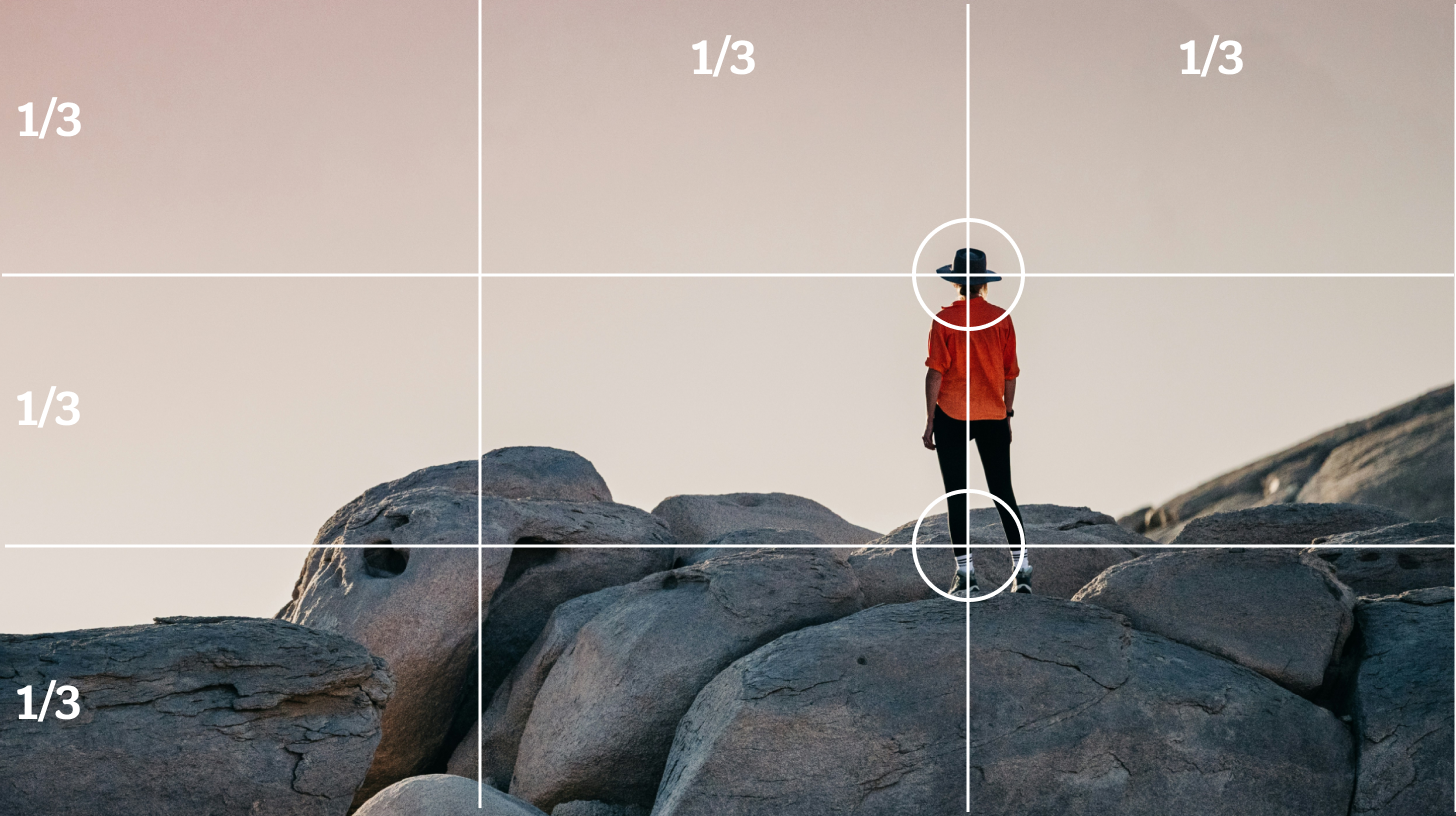
As a quick reminder, here are the Big 5 traits:
- Extroverts: Outgoing and sociable, enjoying social interactions and often seeking the company of others.
- Neurotic individuals: More emotionally sensitive, experiencing higher levels of anxiety, mood swings, and distress.
- Conscientious people: Organized, dependable, and often adhering to rules and schedules meticulously.
- Agreeable individuals: Friendly, empathetic, and cooperative, making them pleasant to be around.
- Openness to experience: Reflects a willingness to embrace new ideas, creativity, and a diverse range of experiences, often associated with curiosity and exploration.
Utilize this information not only to tailor your own profile but also to interpret others’.
Here’s How Personality Traits Influence Profile Photos:
- Extroverts: They often post vibrant photos filled with positive emotions, like group photos with multiple faces, reflecting their love for social interactions. If you’re an extrovert, highlight your outgoing nature by sharing colorful, cheerful photos featuring friends.
- Neurotic Individuals: Those with neurotic tendencies may shy away from displaying faces in their photos. When faces are included, they’re either significantly larger than normal or partially obscured with glasses, and expect less positive facial expressions. If you lean toward neuroticism, work on overcoming photo-related fears and consider showcasing your genuine emotions.
- Conscientious People: They tend to adhere to social norms in their profile pictures, with common smiles and well-proportioned, high-quality photos. If conscientiousness is your strength, use this trait to convey reliability and approachability.
- Agreeable Individuals: They frequently display positive emotions in their photos, even if slightly blurry. Embrace your agreeable nature by highlighting the warmth and friendliness that come through in your photos.
- Openness to Experience: Those high in openness tend to avoid showing faces even more than neurotic counterparts. Their photos often feature negative or neutral emotions, with enhanced contrast and sharpness and less blurriness. If openness defines you, use your profile to showcase your unique creativity and distinctive aesthetic.
Apply the Glance Test
The glance test provides a quick method to assess how others perceive your personal brand. It involves swiftly reviewing your personal brand, whether it’s your LinkedIn profile, dating profile, or email signature, and evaluating it based on three positive words that align with your desired image. If the words that come to mind are negative or don’t resonate with your personal brand, it may be necessary to make some enhancements.
Trigger and establish attractors and allergies. In essence, think about the positive neural patterns you want to evoke for your audience. Also, consider how you can create “allergies,” which are cues signaling to someone that they are not your intended audience, thereby saving both parties time.
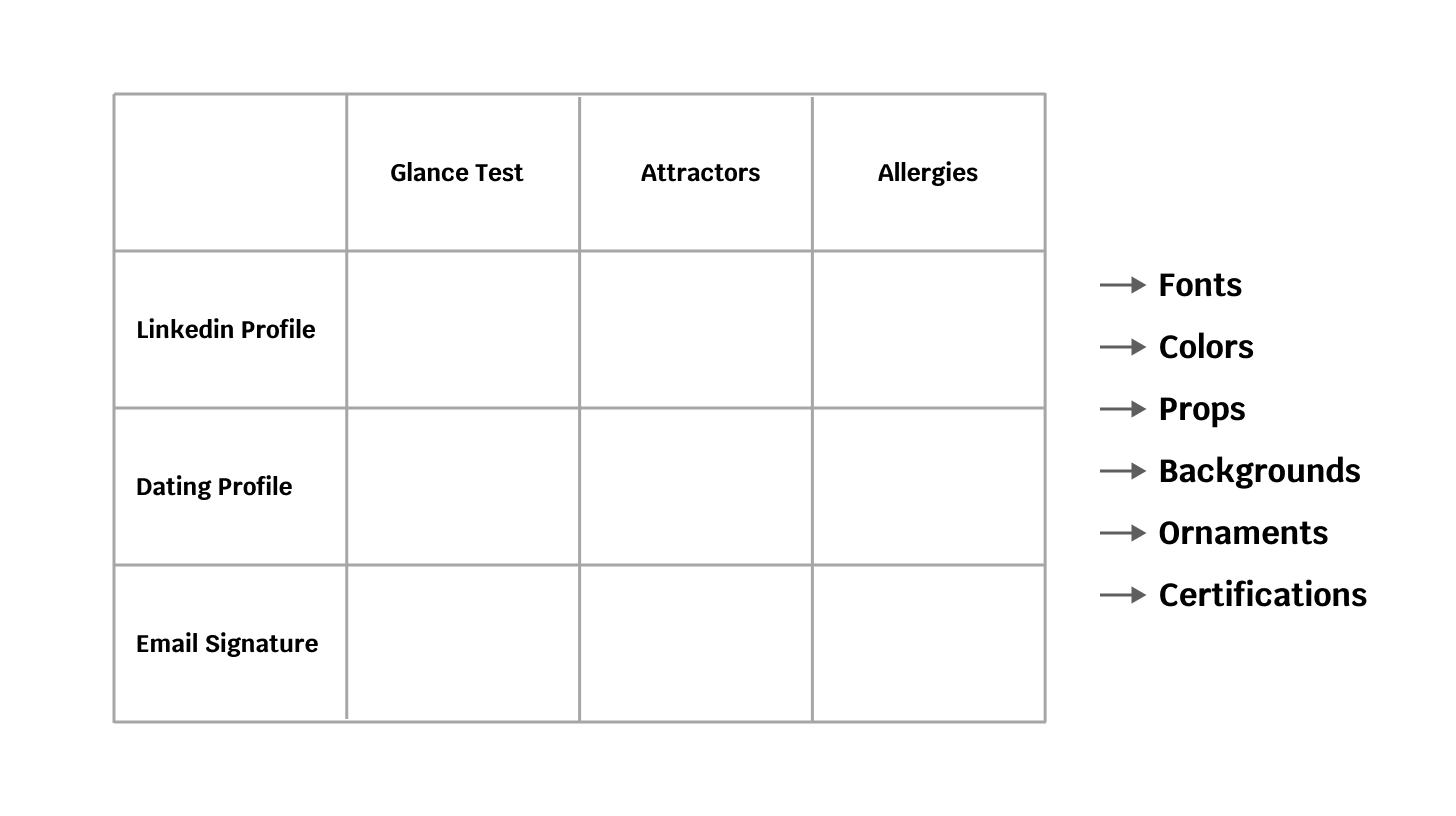
Here are some tips for employing the glance test to assess your personal brand:
- Select three words reflecting your desired personal brand: Choose positive words that mirror the image you wish to project. For instance, if professionalism and expertise are your goals, your words might be “expert,” “experienced,” and “reliable.”
- Evaluate your personal brand against these words: Quickly review your personal brand, whether on LinkedIn, a dating platform, or in your email signature, and assess it based on the three chosen words. Does it align with your intended personal brand? If not, consider making improvements.
- Use color coding for identifying areas for improvement: To enhance the glance test, employ color coding to pinpoint areas for improvement. Assign red to negative words and black or blue to positive words. This visual approach can help identify areas that need attention.
- Implement improvements where needed: If your personal brand doesn’t align with your desired image, take steps to make improvements. This might involve updating your LinkedIn profile, incorporating additional cues in your dating profile, or revising your email signature.
Capture, Charm, Command
Researchers 7 delved into the analysis of 1,000 facial images and identified specific cues that significantly enhance your digital charisma. Here’s what they discovered:
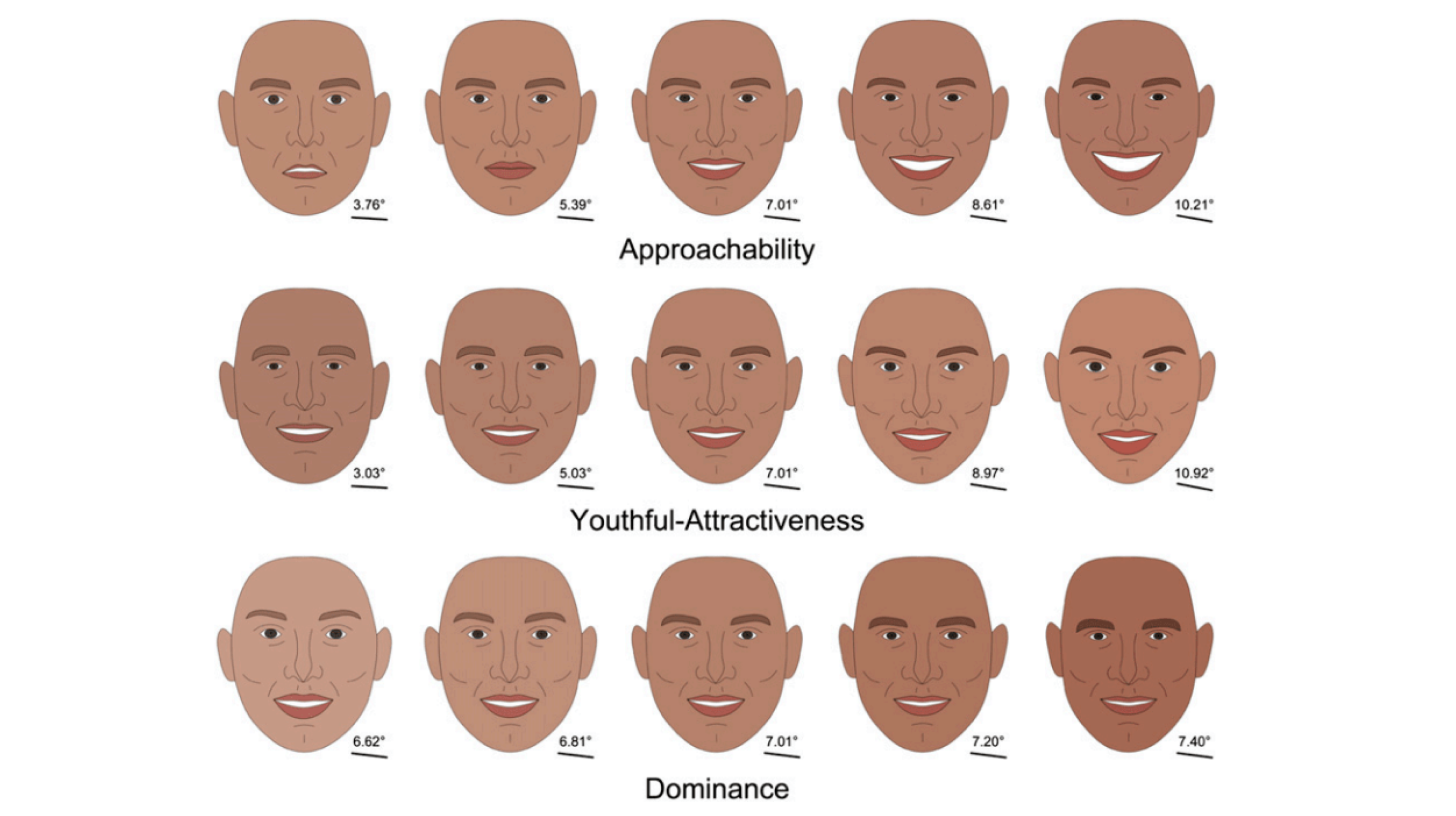
- Ignite Capture: Images featuring a broader smile were perceived as more approachable. Similar to real-life interactions, a welcoming smile works wonders. In the online realm, this translates to using cheerful emojis and warm language in your texts and comments. Your virtual grin will entice others to engage with you, laying the foundation for meaningful connections.
- Evoke Charm: The study highlighted that larger eyes emit a youthful allure. In the digital landscape, this pertains to your profile picture. Opt for well-lit, flattering photos that emphasize your eyes. This subtle adjustment can make your digital presence magnetic and unforgettable.
- Command Attention: While you can’t alter your facial structure online, you can refine your virtual body language. The study suggested that a more stereotypically masculine face is associated with increased online dominance. Here’s your cue: assert yourself, but also be an attentive listener during digital exchanges. This balance enables you to convey authority without overwhelming your online interactions.
Direct Your Gaze Left
Certainly, facing the camera head-on is an option. However, should you choose to turn your head, research 8 indicates that featuring the left side (your right when viewing the picture) often conveys more emotion, while the right side suggests higher dominance and self-control.
Reveal Your Surroundings
If you aim to project warmth and trustworthiness to your colleagues, consider sharing occasional selfies featuring your work environment. A study 9 discovered that scientists who posted selfies from their labs or fieldwork were perceived as significantly warmer and more trustworthy—without compromising their perceived competence!
For a more in-depth exploration of warmth and confidence, check out: LIAR OR LEGIT?
Wield a Compelling Smile
A study from Stanford 10 unveils that profile photos featuring smiles convey both more dominance and affiliation compared to photos without smiles.
Dominance signals confidence and authority, while affiliation suggests warmth and openness. By blending these elements in your smile, you can create a potent impression that lingers. Whether you’re engaging with potential clients, finalizing business deals, or simply connecting with people, consider your smile as your secret weapon.
Check out how other emotions ranked:
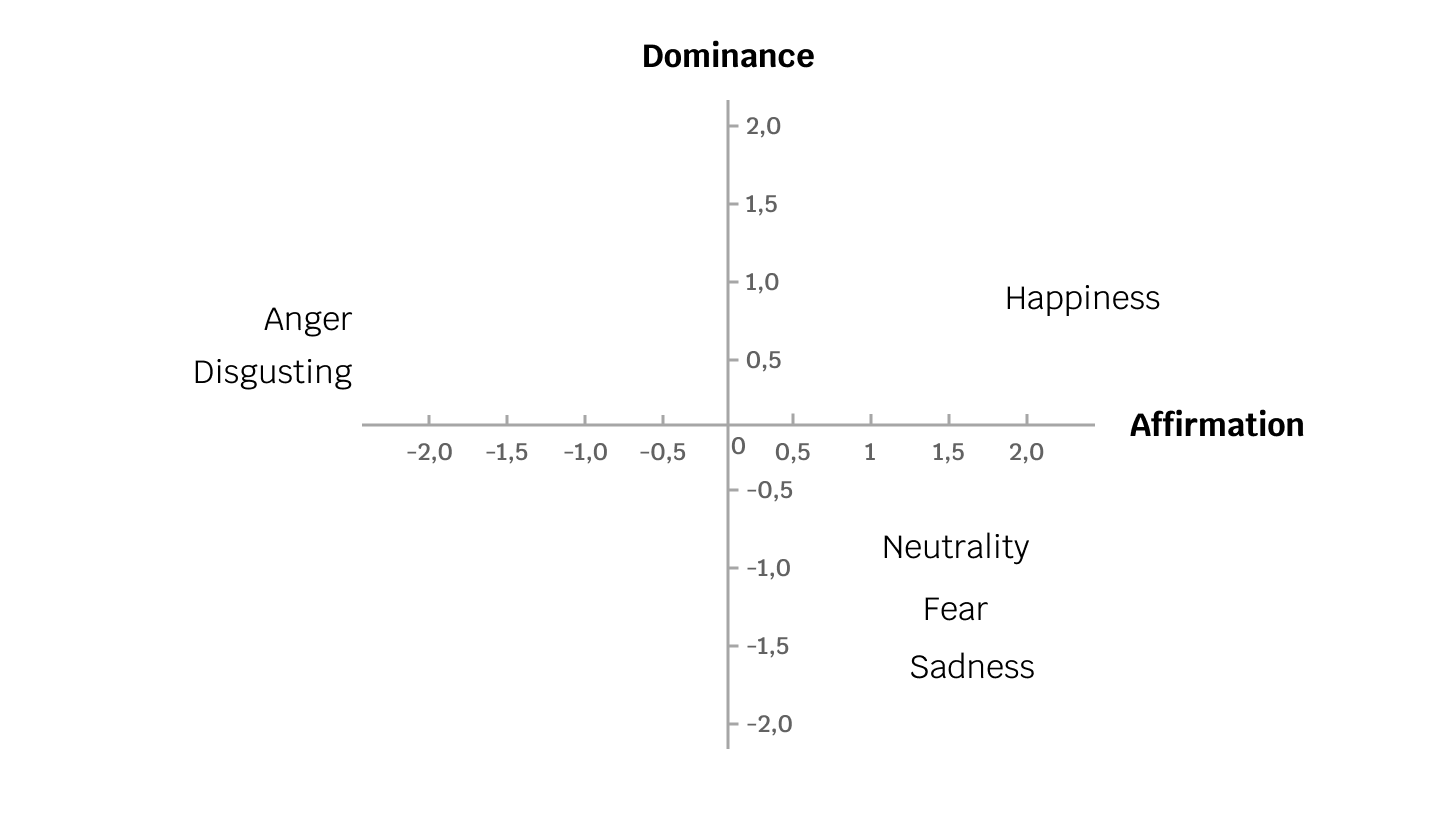
Bonus Tip: If you want to enhance your trustworthiness even further, another study 11 indicates that a smiling mouth accompanied by slightly surprised eyebrows was found to be more trustworthy than neutral or scowling faces.
Harness the Power of Gaze Cues
It’s a natural tendency to follow the direction of other people’s gaze. Makes sense, doesn’t it?
When crafting your profile, carefully consider where you’d like your audience to focus. Do you want them to pay attention to your headline? Perhaps you have a compelling opt-in you want them to click? Configure your photo strategically to guide them where you want their attention to go.
Choose Modesty
In a study 12, researchers presented participants with two Facebook profiles belonging to a girl named “Amanda.” The profiles were nearly identical, except for one crucial difference—the profile pictures.
One version showcased Amanda in a conservative jeans and shirt outfit, while the other depicted her in a revealing red dress with a thigh-high slit, exposing a garter.
Participants were then tasked with evaluating Amanda’s competence, friendliness, and attractiveness based solely on the content in her profile.
The results spoke volumes: The Amanda with the provocative profile picture received lower ratings in all three areas.
Therefore, when curating your own profile pictures, lean towards a modest dress code—especially for professional contexts.
Crafting a Personal Brand Statement
A personal brand statement succinctly encapsulates your unique value proposition and what distinguishes you from others in your field. It should be brief, attention-grabbing, and contain enough compelling information to convey your value while showcasing your personality.
- Start with your name and title: Commence your personal brand statement with your name and title to establish your credibility and expertise in your field.
- Highlight your accolades: Incorporate your accolades, such as awards, certifications, or degrees, to underscore your authority and expertise.
- Use a defining quote: Integrate a quote that defines who you are and aligns with your warmth and competence level. This can convey your personality and values, reinforcing your personal brand.
- Keep it concise: Aim for brevity, with one to two sentences summarizing your unique value proposition and what sets you apart from others in your field.
Examples of Personal Brand Statements:
- “I’m Jane Doe, a marketing strategist with over 10 years of experience. My passion for creativity and innovation is summed up by my favorite quote: ‘The best way to predict the future is to invent it’ by Alan Kay.”
- “As a software engineer with a Ph.D. in computer science, I’m dedicated to creating innovative solutions that make a difference.”
- “I’m John Smith, a financial advisor with a proven track record of success. I believe in the power of positive thinking and my commitment to helping my clients achieve their financial goals.”
Designing an Appealing Avatar
Teams often use avatars for a playful touch or to maintain anonymity. Ever wondered what makes a 2D avatar both appealing and likable? Toronto’s York University 13 conducted a fascinating study to shed light on this.
What to Avoid: When creating your avatar, steer clear of neutral or negative expressions, black or short hair, and accessories like hats or sunglasses. These elements may signal traits such as introversion, neuroticism, and disagreeableness, negatively impacting how others perceive your digital presence.
On the Positive Side, Aim for:
- Wide Eyes: Avatars with wide eyes are often perceived as more approachable and friendly, enhancing their overall appeal.
- Oval Face: An avatar with an oval face shape is likely to convey a sense of balance and harmony, making it more likable.
- Brown and Long Hair: Opt for brown hair and longer hairstyles to create a positive impression.
- Smiling Expression: A smiling avatar universally communicates positivity and approachability.
- Sweater: Dressing your avatar in a sweater can give off a warm and friendly vibe.
Create Positive Neural Maps:
Neural maps are the mental associations people make when they see something, like a picture on your online profile. To attract the right people and build your personal brand, consider the following tips:
- Reflect Your Personal Brand: Choose content that aligns with your personal brand and the image you want to project. For instance, if you aim to be seen as adventurous and family-oriented, a picture of skiing with your family might be fitting.
- Use Color Strategically: Colors can be powerful for creating positive neural maps. Select colors that align with your personal brand; for professionalism and reliability, a profile picture with a blue background might be suitable.
- Authenticity Matters: While aiming for positive neural maps, be authentic. Choose content that genuinely reflects who you are and your values.
- Seek Feedback: Get input from friends or colleagues on your chosen content. Does it create positive neural maps? Does it accurately represent your personal brand?
- Trigger Positive Associations: Think about the positive associations you want to trigger. Share articles or blog posts to showcase your expertise if you aim to be seen as a thought leader, or share pictures of collaboration if you want to be perceived as a team player.
Dating Tips
A study 14 revealed that incorporating originality and authenticity into your profile can significantly enhance your attractiveness, intelligence, and humor ratings. Conversely, relying on unoriginal tropes can have detrimental effects. To maximize your appeal, steer clear of clichés with the following tips.
Should You Include a Cat or Dog Pic?
For gentlemen aiming to optimize their appeal on dating apps, the decision to share a photo with a cat requires careful consideration.
Research 15 indicates that some women might perceive men holding cats as less masculine and less datable. Additional studies 16 suggest that opting for a cat might lead to being perceived as more introverted and less agreeable. On the other hand, individuals favoring dogs tend to score lower on openness to experience.
Use a (Good) Profile Picture
Did you know that the impact of your text is responsible for less than 10% of the online impression you make?
OKCupid’s “Love Is Blind Day” experiment 17 sheds light on the potent influence of profile pictures in online dating. On this momentous day, all photos were removed from the platform, yielding surprising outcomes:
- Users responded to first messages a staggering 44% more often.
- Conversations became more profound and engaging.
- Contact details (phone numbers, emails) were exchanged at a faster pace.
In essence, OKCupid demonstrated significantly improved results without profile pictures. Moreover, in another experiment, profiles with and without text garnered similar user ratings.
Hence, in the realm of online dating, it’s crucial to remember that a picture is worth a thousand words.
Use a Bio
Tinder, a renowned dating app, conducted research 18 indicating that your profile bio can significantly enhance your chances of finding a match. Profiles with well-crafted bios experienced a remarkable four-fold increase in the number of matches compared to those with no text. So, adding a bio seems like a no-brainer, right?
Here’s where it gets interesting: While adding a bio on Tinder can work wonders, consider our previous tip about OKCupid, where text accounted for less than 10% of the impression you make. This may seem contradictory, but it’s all about the context of the platform.
Tinder’s swiping culture places a bit more emphasis on the bio, whereas some other platforms may assign less importance to bios. Therefore, it’s essential to assess the features that stand out most on each platform before investing significant time in crafting your bio.
Avoid Overused Bio Words
In the creation of your dating bio, standing out from the crowd is essential. An analysis 19 of 5,000 profiles in Sydney, Australia, unveiled the most frequently used bio words. To craft a more appealing profile, it’s advisable to steer clear of these overly used terms:
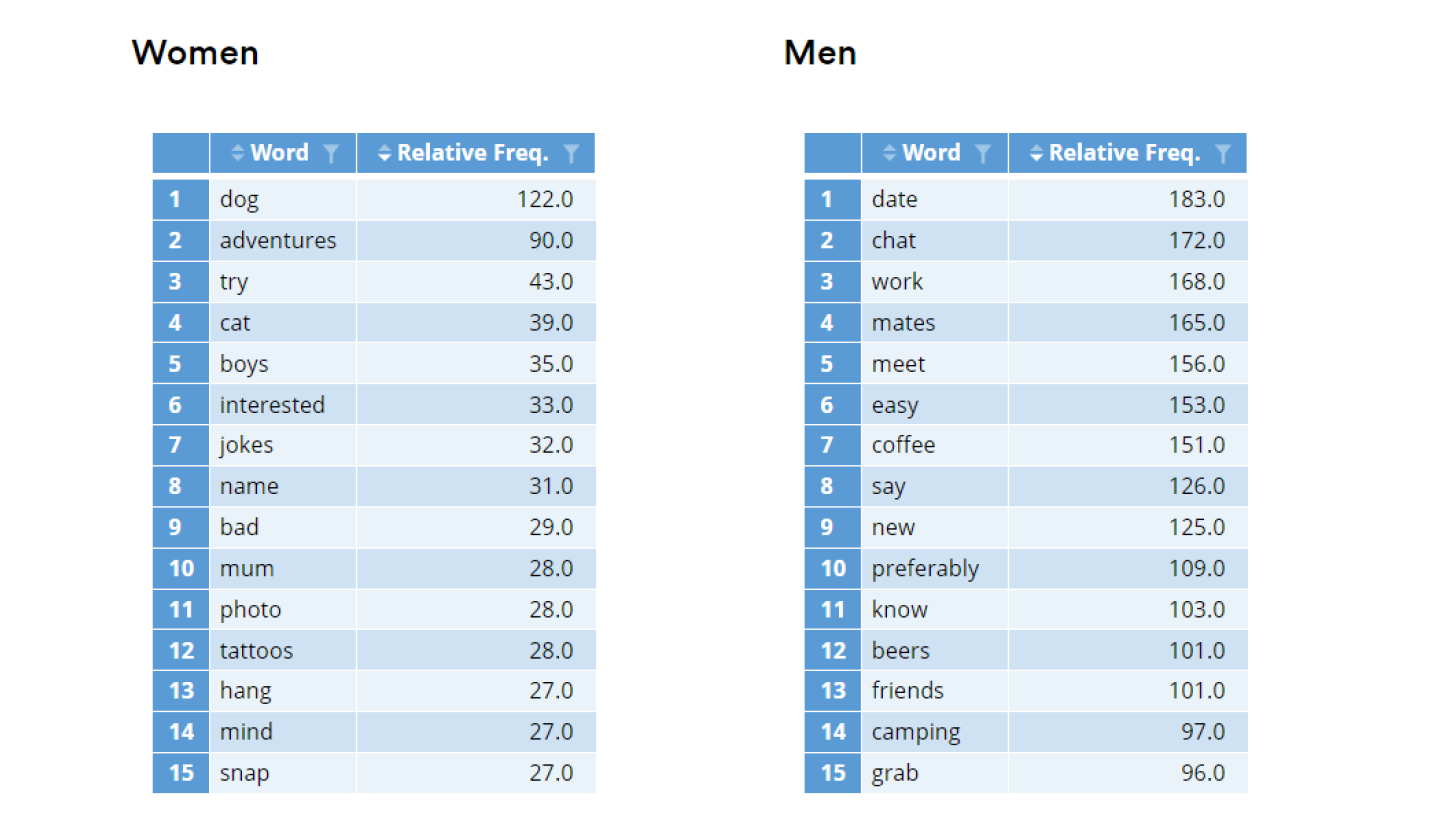
Interestingly, the study found that 23% of Tinder profiles had no words in their bios, and over 60% contained a mere 30 words or less. Emojis also played a significant role, with more than 44% of profiles using an average of four emojis each.
To make a memorable impression, consider breaking away from clichés, injecting creativity, and adding a personal flair to your Tinder bio. If you’re seeking a list of great words to use, we’ve got you covered: LIAR OR LEGIT?.
To Look or Not Look?
To gaze or not to gaze? This remains a question for many. In OkCupid’s extensive analysis 20 involving over 7,100 users, interesting insights emerged:
- For Women: Opting for direct eye contact with the camera demonstrated the most positive impact on attracting matches.
- For Men: Contrarily, the data suggests that looking away yields the most significant effects.
Why? Women making direct eye contact appear more engaging and trustworthy, while men looking away convey mystery or confidence.
Aim For Confidence, Not Happiness
When it comes to dating profile pictures, an intriguing twist unfolds—displaying happiness might not be the optimal choice for men. Surprisingly, studies 21 propose that happiness ranks among the least attractive emotions for men in the eyes of women. Instead, consider highlighting emotions such as pride or confidence to evoke more interest and curiosity. A special note: If genuine happiness radiates from you, feel free to showcase it authentically, irrespective of study findings.
Put Down the Drink
Furthermore, it’s advised to avoid holding a drink in your photo. Studies 22 consistently reveal that individuals holding alcoholic beverages are often perceived as less intelligent, even when there’s no evidence of altered behavior. Always remember to drink responsibly.
Digital Body Language FAQs
Why is Digital Body Language Important?
In the virtual realm, akin to Sherlock Holmes relying on subtle clues to unravel mysteries, the digital world possesses its own concealed language—digital body language. The significance of this contemporary nonverbal communication is profound for various reasons:
- Trust-Forging: In online interactions where face-to-face rapport-building is a luxury, digital body language becomes the cornerstone for trust. It serves as the secret handshake of the virtual world.
- Communication Charisma: While communicating charismatically is challenging in-person, the digital realm poses even greater hurdles. Effectively conveying emotions and intentions digitally is crucial to avoid leaving a negative impression.
- The Mark of a Pro: In the professional arena, mastery of digital body language signals commitment to professionalism. Proficiency in this realm often translates to competence in in-person interactions.
- Enhancing Interpersonal Bonds: Building strong connections virtually is a challenge. Digital body language acts as the bridge that facilitates deeper bonds with others, transcending physical distances.
- Conflict Resolution: Conflicts can arise in any communication, including online exchanges. Understanding digital body language equips individuals with skills to gracefully de-escalate disputes and decipher hidden emotions behind text-based disagreements.
How can you improve your digital body language?
Improving digital body language requires a conscious effort to align the messages conveyed through digital communication channels. Consistency in tone and language with the intended message is crucial. Additionally, awareness of nonverbal cues, such as facial expressions and body language during video calls, contributes to enhanced digital communication.
What are some common mistakes people make with their digital body language?
Common mistakes include a lack of awareness of nonverbal cues, where elements like profile background or facial expressions inadvertently convey unintended messages. Overuse of emojis or abbreviations can also hinder understanding, making it challenging for others to grasp the intended message.
How does digital body language differ from in-person communication?
Digital body language differs from in-person communication by relying heavily on written and visual cues instead of verbal and nonverbal signals. This necessitates a more intentional approach to communication to ensure messages are received as intended. Moreover, digital communication may lack the depth and nuance inherent in face-to-face interactions, making it more challenging to build rapport and understanding.
Go Forth And (Digitally) Conquer!
Now equipped with these science-backed tips, you’re poised to craft the most impressive profile possible. But, if you find yourself still grappling with the fundamentals, don’t miss out on this invaluable resource: LIAR OR LEGIT?
- https://passport-photo.online/blog/linkedin-picture-hireability/
- https://moz.com/blog/google-author-photos
- https://cognitiveresearchjournal.springeropen.com/articles/10.1186/s41235-017-0058-3
- https://uxdesign.cc/how-to-stand-out-on-twitter-using-color-theory-7e786c0e00a7
- https://socialnomics.net/2014/12/08/the-science-to-having-an-attractive-profile-photo-on-linkedin/?ref=buffer.com
- https://sites.sas.upenn.edu/sites/default/files/danielpr/files/persimages16icwsm.pdf
- https://www.pnas.org/doi/pdf/10.1073/pnas.1409860111
- https://www.doctorabel.us/side-bias/asymmetries-in-portraits-insight-from-neuropsychology.htmlhttps://www.doctorabel.us/side-bias/asymmetries-in-portraits-insight-from-neuropsychology.html
- https://journals.plos.org/plosone/article?id=10.1371/journal.pone.0216625
- http://web.stanford.edu/group/spanlab/Publications/bk96jnb.pdf
- https://pubmed.ncbi.nlm.nih.gov/19015102/
- https://psycnet.apa.org/record/2014-28827-001
- https://journals.sagepub.com/doi/abs/10.1177/0146167214562761
- https://journals.plos.org/plosone/article?id=10.1371%2Fjournal.pone.0274860
- https://www.mdpi.com/2076-2615/10/6/1007/htm
- http://wwbp.org/blog/personality-profiles-of-cat-and-dog-people-in-social-media/
- https://blog.okcupid.com/index.php/we-experiment-on-human-beings/
- https://arxiv.org/pdf/1607.01952.pdf
- https://www.displayr.com/crafting-your-tinder-bio/
- http://blog.okcupid.com/index.php/the-4-big-myths-of-profile-pictures/
- https://csyorkregion.com/images/Articles/Happy-Guysin-pres-Emotion.pdf
- https://papers.ssrn.com/sol3/papers.cfm?abstract_id=1623056
